How a 70-mile Backpacking Trip Taught My 3 Kids They Can Do Difficult Things
A long-distance journey through the Sierra Nevada mountain range in California created lasting lessons and memories.
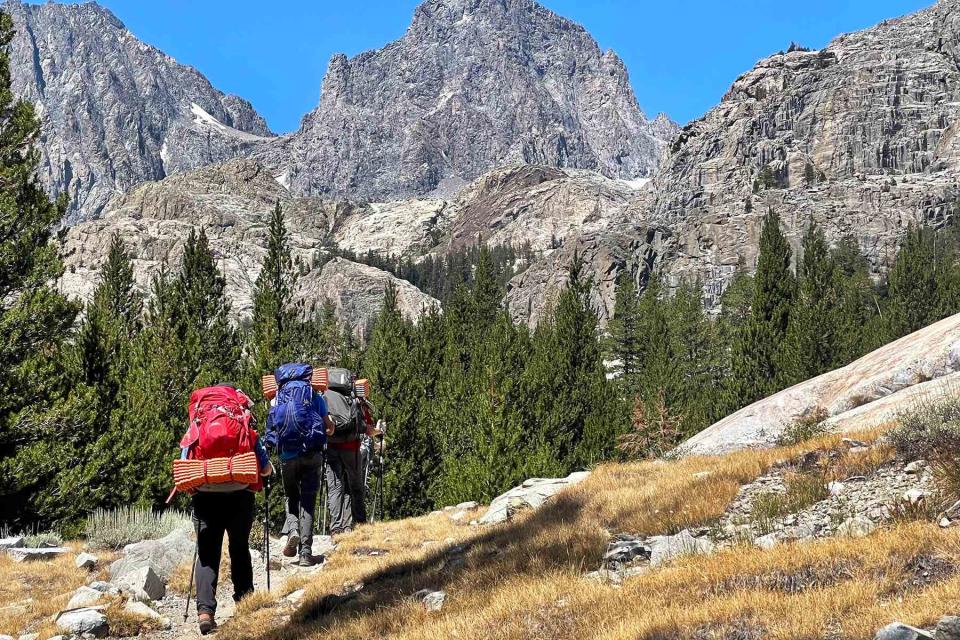
Wendy Altschuler
When you start calculating how many summers you have left with your kids before they leave the proverbial nest, it can put you in parenting overdrive as you question whether you’ve prepared your brood with all the necessary skills and experiences for life.
To teach my boys resilience and self-sufficiency, and to have a wilderness-heavy family bonding experience that they would remember well into adulthood, we backpacked nearly 70 miles on the John Muir Trail, a long-distance romp through the Sierra Nevada mountain range in California. Some days were toilsome as we climbed up and over peaks, far above the treeline, with sore bodies, blistered feet, and weight on our backs and yet, the moments when we stopped for a glacial dip in a remote lake, raided a free hiker bucket full of goodies, or made it to our camp just as the sun dipped below the horizon were downright blissful.
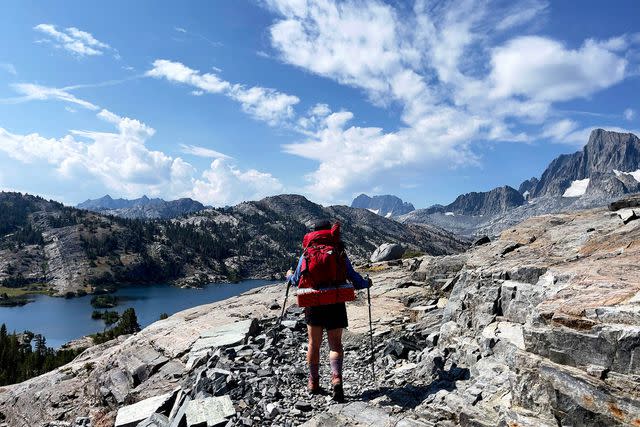
Wendy Altschuler
The lessons we wanted to teach our boys centered around the notion of "peaks and valleys." While difficult and trying times will certainly come, they’ll never last forever — the clouds will part, the rain will stop, and the sun will shine again. And, while you think the target might be well out of reach — whether that be summiting a peak or accomplishing everyday goals, you’re capable of much more than you think you are. You can, in fact, do hard things.
Deciding to do a backpacking trip like this isn’t a decision we made lightly. We spent months planning the routes we’d take, dehydrating food, and getting all the necessary equipment that we’d be schlepping over our shoulders. We picked a charity to support, ultimately raising $5,600 for Parkinson’s disease research. My older son got certified in Wilderness Medicine, a skill that he ended up using on the trail to help his little brother when he hurt his finger. We trained by getting our boys Styrofoam airplanes that they could fly down a hill, retrieve, and then run back up to the top, and we practiced using our gear on weekend backpacking trips.
Emotional souvenirs, permanent in my mind, include seeing my middle son, Sage, with all his gear on, ready to go, as he eyed himself in the hotel mirror before heading out the door to start our big trip. Sun hat: check. Hiking poles: check. I could tell he was more eager than anxious, more proud than hesitant. This same son would grow even more confident on the trail, often hiking ahead of us, having his own mini solo adventures. Selfies with deer would make it into his camera roll.
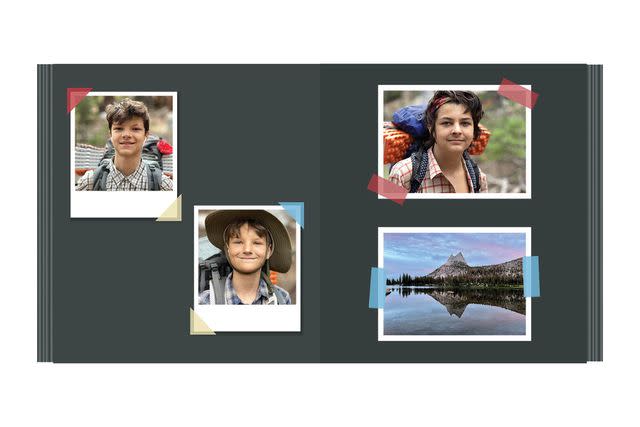
Photos: Wendy Altschuler; Scrapbook: yuliash/Getty Images
Every time we passed someone on the trail, including a wild-eyed man with long hair who went by the trail name of “Two Socks,” remarks would be made about how it was so amazing that our youngest son, Kai, was backpacking on this demanding trail at 11 years old. And, you know what? It was amazing! Not only did our he carry 16 pounds on his back, but also, we didn’t see anyone else on the trail as young as him. Kai had to develop the mental fortitude to keep going, matching his older brothers who were seemingly always well ahead, when he had the shortest legs. We also heard people say things like: “I wish my parents took me on an adventure like this when I was their age,” and “I wish I took my kids on a trip like this when they were young.”
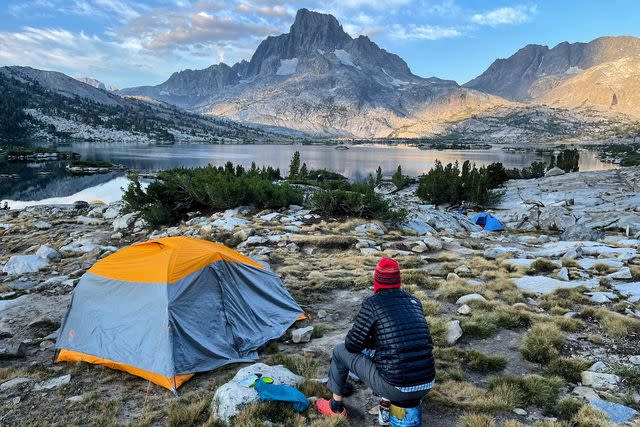
Wendy Altschuler
More than everyone, my older son, Bridger, didn’t want to go on this quest — he was worried about his friends back at home and about the very real challenge of hiking every day, setting up and breaking down camp, and being in the backcountry for so long. The thing is though, this kid is a wonderful outdoorsman, able to be dirty and uncomfortable with minimal complaints. He’s the first to catch a frog, find feathers, or break open rocks. About midway through the trek, long after his phone battery died and he was no longer able to listen to a podcast, book on tape, or music, he caught his first fish and cooked it for us, a tangible triumph.
Mustering the strength every day to get yourself up and over summits on the John Muir Trail is challenging and difficult for most folks, even if you don’t have children in tow. We had to not only motivate our boys, but also, mitigate danger as much as possible, hiking early to beat the rain and allowing for plenty of time to get to our next campsite.
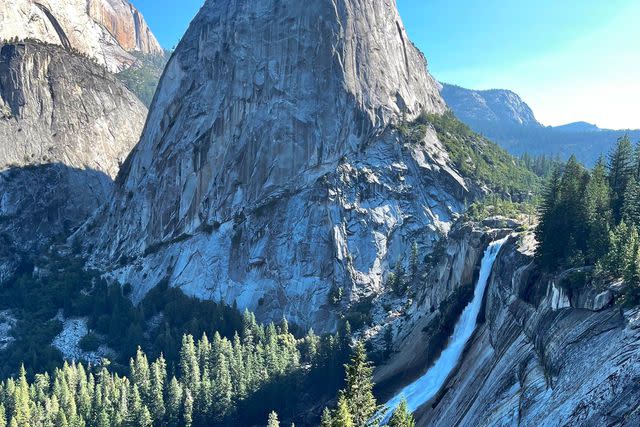
Wendy Altschuler
It was sunny when we reached the top of Donohue Peak on the eastern border of Yosemite National Park. We whooped and hollered and took off our heavy packs for a moment to high-five each other, celebrate, and take it all in. It wasn’t long before the sky blackened, however, and the rain began to drop. We swiftly covered our packs and began our descent. But then? Lightning. In our research, we had read about how dangerous it is to be exposed, above the treeline, when lighting claps. While deaths from lighting strikes are rare, they do happen. A quarter of the way down, drenched and dog-tired, we saw a Pacific Crest Trail hiker stop to put up her shelter. She was clearly way more experienced than us, as she was on a 2,650-mile journey while we were making our way through only a third of the John Muir Trail’s 211-mile ramble. Should we set up our tent too? We’d have to decide quickly. We made the gut decision to get our boys off the mountain as speedily as we could. We traversed fast-moving creeks with slick rocks, gripping our poles and trying to find secure footing. When my youngest protested and stopped to rest, we ardently got him moving. Once safe, it felt like we could finally breathe.
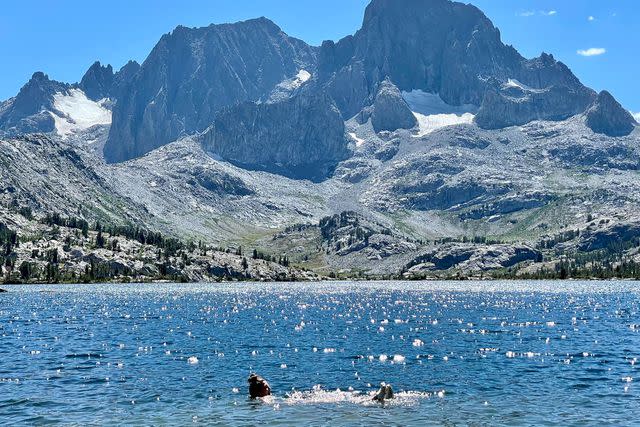
Wendy Altschuler
Back at home, I roll a heart-shaped rock that Kai gave me on the trail in my palm. I think about how even after a long day of backpacking, my boys helped to set up our tents, sometimes in the dark, wash and hang laundry, gather and filter water, and cook dinner on our camp stove. I think about the night I slithered into my tent at the base of Cathedral Peak, certain my joints would never allow my knees to bend the same way again, and my husband coaxed me out to gaze at the star-filled sky, filling my heart with gratitude. I remember the still-standing inky black scorched trees, from a past forest fire, with multi-hued wildflowers and bristly shrubs taking up residence on the neon-green carpet below, and a gargantuan too-close black bear that startled me on the trail and made it impossible to sleep through the night. I beam when I think about the awards ceremony we held in our boys’ honor, where they accepted medals and praise in front of their whole family — grandparents, cousins, aunts, and uncles — after we watched a homemade movie of our adventures playing on a bed sheet in the backyard.
Spending time in nature has a way of slowing down time, making it possible to connect with each other in a meaningful way. Soon, my boys will be men — they will no longer be burrowed under my protective wing, and it will be these indelible memories that I hold dear, hopeful that my sons will draw upon our adventures as they create their own lives full of passion and curiosity.
For more Travel & Leisure news, make sure to sign up for our newsletter!
Read the original article on Travel & Leisure.

